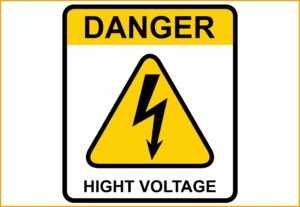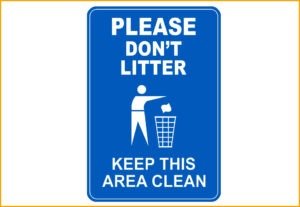Health and Safety Signs are required by The Health and Safety (Safety Signs and Signals) Regulations of 1996 to inform and direct viewers. Businesses must in the UK display and maintain safety signs in areas of the workplace where there is a possible risk that has not been eliminated or reduced by other means.
Many of the safety signs that we see in the UK have been standardised, so no matter where you see one, you will know what it means. The uniformity of health and safety signage has made it possible for signs to communicate information silently, nearly in a universal language that most UK citizens can instantly understand due to the sign’s design and colour.
Signage for health and safety uses four colours red, yellow, blue, and green. This makes it simple for the reader to deduce the sign’s significance from the colour presented, which in turn affects how they respond.
Health and Safety Signs & Their Meanings:
-
Red Signs
When red is used in a safety sign, it is typically a prohibitory sign that tries to alert the audience to a harmful situation that may be present nearby or that may develop as a result of their activities. Prohibition signs are typically spherical and have a broad red edge with a diagonal line through a picture of the prohibited behaviour in black and white.
-
Yellow or Amber Signs
A yellow or amber safety sign, like traffic lights, displays a warning and informs the observer to exercise caution or care in their environment. A warning sign is frequently seen while employing potentially harmful substances and is triangular in design. The term “hazard sign” refers to a sign that is over 50% yellow or amber with a thick black margin and a distinct pictogram of the hazard.
Even though a sign’s content seems to be self-explanatory at first glance, it is the employer’s duty to guarantee that all employees understand what it means in the workplace.
-
Blue Signs
Blue safety signs are known as obligatory signs since they show that a certain action must be completed before moving forward. For example, donning a hard helmet while entering a building site or putting on safety goggles when dealing with chemicals are two examples.
Mandatory safety signs have a circular shape, a background that is above 50% blue, and a white pictogram that shows the directive.
-
Green Signs
Green safety signs advise the viewer of safety by highlighting exit routes and indicating first aid stations or places. These rectangular signs with white images clearly indicate the way a person should move or the safety features offered at a location.
To make sure the right message is conveyed to the viewer, text prompts can be used in conjunction with the images shown on any of these signs.
Whatever the goal of the safety signs, it is the duty of UK employers to make sure that the most pertinent health and safety sign is visible, unobstructed, and in good repair. They have a responsibility to all employees to ensure that they are aware of the significance of every signage posted across their premises.



